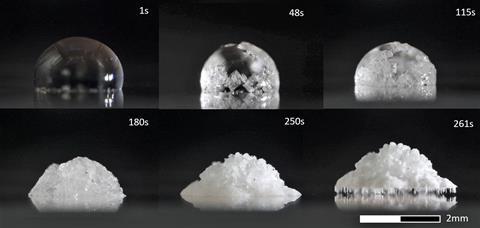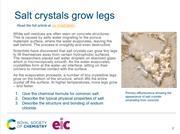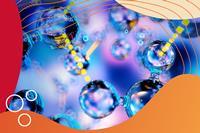Show students how ionic crystals can demonstrate novel crystallisation to avoid hydrophobic surfaces
Download this
A starter slide to use with 14–16 year old students to provide a new context for their study of ionic crystals: rsc.li/2FsYdlQ

Scientists have discovered that salt crystals can grow tiny legs to lift themselves away from certain hydrophobic surfaces.
White salt residues are often seen on brick or concrete structures. This efflorescence is caused by salty water migrating to the porous materials’ surface, where the water evaporates, leaving the salt behind. The process is unsightly at best and destructive at worst.
Although sodium chloride is the most common salt on Earth, little is known about how surface treatments affect its crystallisation. The researchers placed salt water droplets on a heated, trichlorooctylsilane-treated glass, which is microscopically smooth. As the water evaporates, crystallites form at the water–air interface, sitting on their corners to minimise contact with the surface. As the evaporation proceeds, a number of tiny crystalline legs grow on the bottom of the structure, which lifts the entire crystal off the surface. At higher temperatures, more legs grow – and faster.
This self-lifting behaviour could have implications for designing building materials that can avoid damage from salt crystal growth.
Read the full story in Chemistry World.
Put this in context
Add context and highlight diverse careers with our short career videos showing how chemistry is making a difference and let your learners be inspired by chemists like Margo, a research innovations manager.
Downloads
Salt crystals grow legs starter slide
Presentation | PDF, Size 85.44 kbSalt crystals grow legs starter slide
Presentation | PowerPoint, Size 1.48 mb











No comments yet